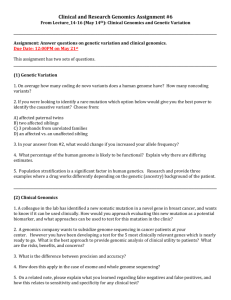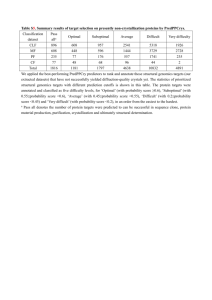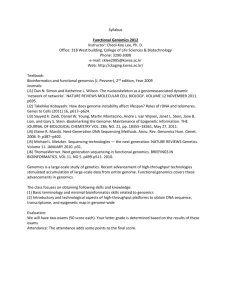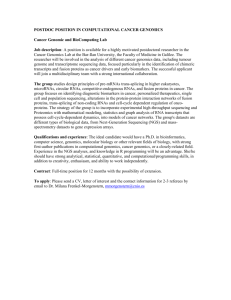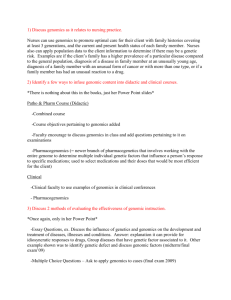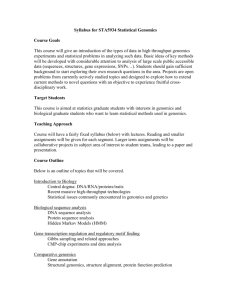Genomics, Bioinformatics, and Proteomics
advertisement
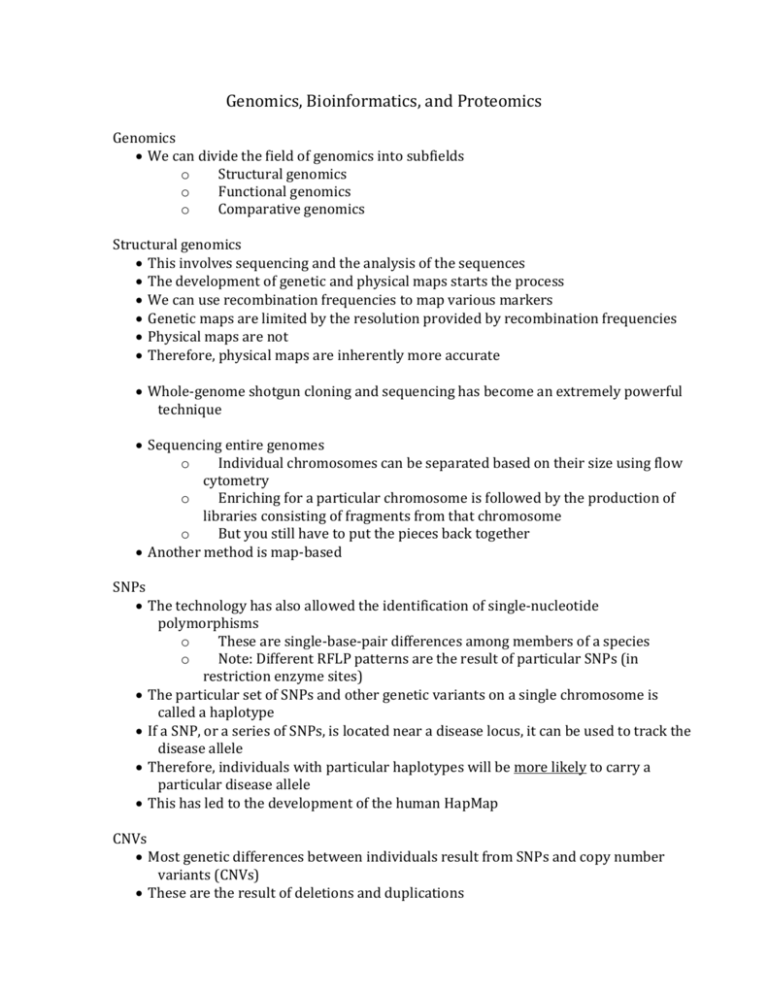
Genomics, Bioinformatics, and Proteomics Genomics We can divide the field of genomics into subfields o Structural genomics o Functional genomics o Comparative genomics Structural genomics This involves sequencing and the analysis of the sequences The development of genetic and physical maps starts the process We can use recombination frequencies to map various markers Genetic maps are limited by the resolution provided by recombination frequencies Physical maps are not Therefore, physical maps are inherently more accurate Whole-genome shotgun cloning and sequencing has become an extremely powerful technique Sequencing entire genomes o Individual chromosomes can be separated based on their size using flow cytometry o Enriching for a particular chromosome is followed by the production of libraries consisting of fragments from that chromosome o But you still have to put the pieces back together Another method is map-based SNPs The technology has also allowed the identification of single-nucleotide polymorphisms o These are single-base-pair differences among members of a species o Note: Different RFLP patterns are the result of particular SNPs (in restriction enzyme sites) The particular set of SNPs and other genetic variants on a single chromosome is called a haplotype If a SNP, or a series of SNPs, is located near a disease locus, it can be used to track the disease allele Therefore, individuals with particular haplotypes will be more likely to carry a particular disease allele This has led to the development of the human HapMap CNVs Most genetic differences between individuals result from SNPs and copy number variants (CNVs) These are the result of deletions and duplications Bioinformatics Developed in response to the need for new computer algorithms to handle the vast amounts of sequence data being generated Functional genomics The transcriptome consists of all of the RNA sequences produced via transcription The proteome consists of all of the proteins encoded by the genome Comparative genomics As more genomes are sequenced, we are getting a better picture of what makes each species unique Prokaryotes Results indicate that there has been substantial genetic exchange between both closely and distantly related species - horizontal gene transfer Eukaryotes Comparisons have revealed some very interesting trends and oddities Mice and humans have ~99% of their genes in common Fruit flies and humans have ~50% We share ~18% of our genes with plants! Comparative genomics has given us insight into the evolution and function of multigene families Metagenomics Metagenomics has provided new insights into our environment Transcriptomics Transcriptome analysis can reveal differential gene expression Microarrays o Can be used to analyze gene expression patterns o We can look at gene expression patterns during specific periods of development o These gene chips have been very useful in determining how gene expression changes under different conditions Proteomics Analysis of the complete set of proteins found in a cell Because of epigenetics, this might prove much more informative than genomic analysis Systems biology In the future, it will be about the interactions - interactome In its rawest form, we can look at interactions between individual proteins Network maps group the interactions to match particular functions/conditions
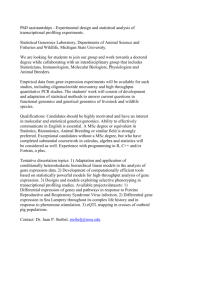
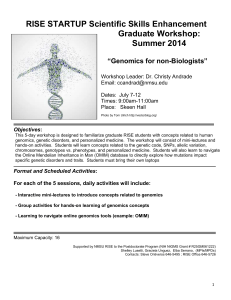
![9_Komlenac - start [kondor.etf.rs]](http://s2.studylib.net/store/data/005352037_1-bdc91b0717c49a75493200bca431c59c-300x300.png)
